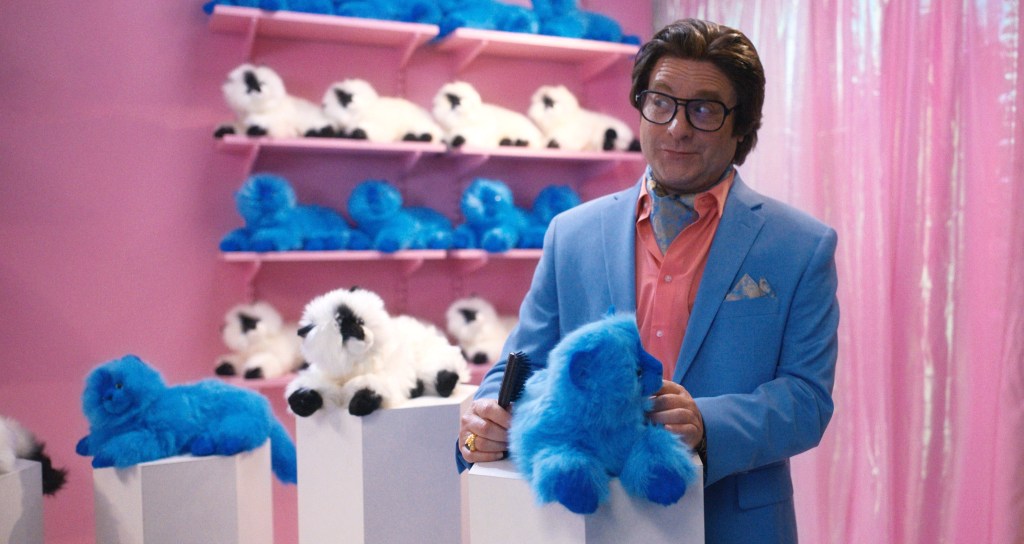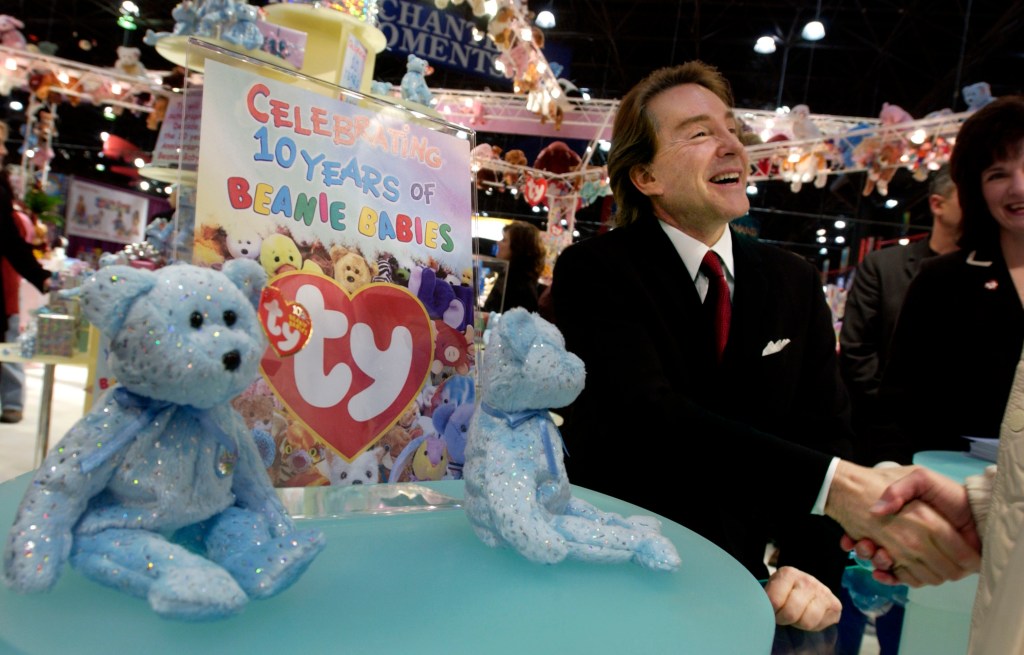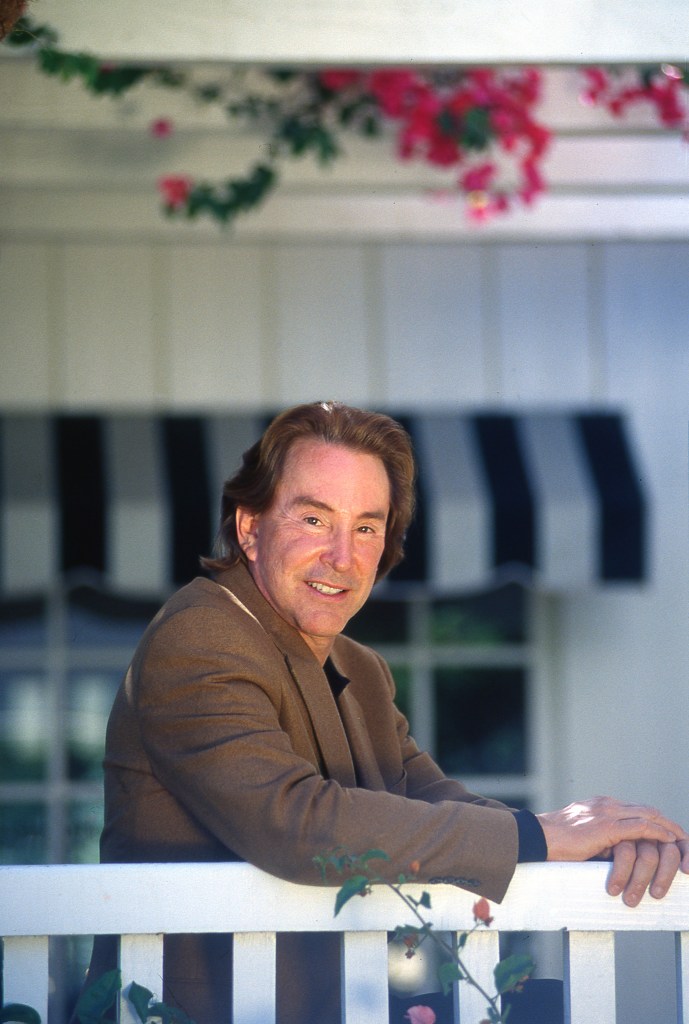Beanie Babies billionaire Ty Warner breaks silence after ‘The Beanie Bubble’
Ty Warner, the reclusive billionaire who founded Beanie Babies, breaks his silence in the wake of the harsh portrayal of the mogul in the recent movie, “The Beanie Bubble.” Warner, who has not done a media interview since the 1990s, takes issue with how he was depicted and wishes a more handsome actor than Zach Galifianakis was cast to play him. The film credits former workers — based on Patricia Roche and Lina Trivedi — for fueling the craze for the plush toy.
The Post: What would you like people to know about you?
Warner: I think several adjectives apply: Creative, collaborative, competitive, critical, analytical, disciplined, focused, perfectionist, driven, caring, kind, sincere. Also, I am both extroverted and private, which I admit is a bit of a paradox.
The Post: How did you come up with the Beanie Baby idea? How similar is it to what was shown in the movie?
Warner: It was nothing like the movie – not remotely. I envisioned a product that kids could afford with their allowance money. My thought process centered around an affordable impulse item.
That idea dictated the size of the product; I wanted it to fit in a child’s hand. Next, I discovered a unique fabric in the headliners of Korean cars, a fabric that was both thin and durable and could be washed. This thin fabric allowed the pellets inside to move and be felt and as you squeezed it. That made the product floppy and pliable.
Legs the Frog was my first prototype in size, texture and filling. I hand-carried it from Seoul to Chicago. Everyone I showed Legs to thought he was unique and cute.
The Post: How much did Lina Trivedi really help your company?
Warner: Lina was a part-time employee. The admittedly fictional movie vastly overstates her role. She certainly helped us get started in the internet space, which created a place for collectors to find out about new products and retirements. She also wrote many poems, but so did several other employees.
The Post: Who should have played you?
Warner: First of all, let me say that Zach Galifianakis is a talented, funny guy, but he’s not playing me in that movie. He’s playing a fictional character who happens to be named Ty Warner.
If they did a biopic, I would think either Daniel Day-Lewis or Warren Beatty would be appropriate.

The Post: Did director Kristin Gore (or anyone else) tell you what was going to be in the movie?
Warner: No.
The Post: How much of a chance did they give you to give your side?
Warner: Zero. But again, they don’t pretend to have made a realistic, historical movie. The disclaimer at the beginning makes this very clear. The movie is 90% made up.
I don’t begrudge the filmmakers that. They are artists. But let’s not pretend the movie is something that it’s not.
The Post: Did the McKinsey executive help your company? What value did he add?
Warner: This is a perfect example of how fictional the movie is. No such person ever existed.
The Post: What was the real story of how you introduced Beanies to England?
Warner: Mike Swallow and his 16-year-old son Mark visited the NY Toy show in 1986 and discovered my products. They immediately purchased a container, and Mark still is my #1 distributor of Ty in the world to this day.
This is another place where the movie veers from the truth. Its depiction of Patti Roche as opening up the UK market for us is inaccurate. She ran warehouse receiving and shipping in the company’s early days. She was not even with the company when Beanie Babies were launched.

The Post: What do you wish you could have done differently to avoid the Beanie Bubble Bust?
Warner: Nothing. I have always been focused on product longevity, not short-term crazes.
The Post: Was it avoidable?
If they did a biopic, I would think either Daniel Day-Lewis or Warren Beatty would be appropriate.
Warner: I don’t think so. Nothing lasts forever. Most crazes are short-lived and only last a matter of months. The Beanie craze lasted longer than any other craze in the history of toys in the world to date.
The Post: Have you spoken to Lina or Patricia Roche since the movie came out? Would you like to?
Warner: I have not spoken to either since they left the company, which was years ago. I would be happy to catch up one day with both and recall those crazy days.
The Post: How many Beanies are you selling today on an annual basis?
Warner: Ty Inc. is a privately held company and has never disclosed that information, which is proprietary.
The Post: How likely is it today for a toy maker to sell their products outside of the big box stores like you did and still have a hit product?
Warner: Not likely. The big box stores don’t take risks and only buy what’s already been proven in other markets. Profitability is much higher in selling to independents when you factor in pricing, terms and conditions.
The Post: What advice do you have for toymakers who would like to follow your example?
Warner: Don’t sell out, because the easiest option is usually not the best option. Real, sustainable success takes a lot of persistence, time and effort. It won’t be quick, and it definitely won’t be easy. Living to work and building something bigger than yourself are huge sacrifices. Success does not happen overnight, so patience and being able to visualize your overall goal is vital. You must be prepared but also be adaptable and agile enough to change direction as the market dictates.
Your biggest competitor should be yourself, and you should aim high.

The Post: You own the Kona resort on the Big Island, and are clearly concerned about the Maui tragedy. How do you think Lahaina should be rebuilt?
Warner: With as little infrastructure as the land will permit and the environment can withstand.
The Post: How concerned are you that it could become another Waikiki?
Warner: Very concerned. Developers and developments must respect the land, the environment and the culture of the area.
Read the full article Here


